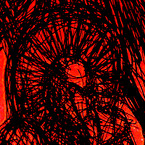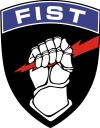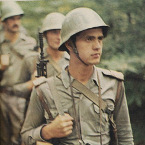Artillerist
Posts: 41
Joined: 11/16/2018
Status: offline

|
Of course you aim to model each faction's capabilities with enough fidelity and flavor to make it both accurate and interesting, but US doctrine is actually a great place to start. We've published our manuals freely since ww2 and they are available online. American Artillerists are free to discuss essentially everything outside of classified weaponeering guides (JMEMs). There is no better springboard into understanding which nuances of another country's doctrine and capabilities should be highlighted, depicted, and modified than first starting by digging into US literature.
Like I've said in the past though, I would be happy with you guys first re-wiring the fire support to provide feedback in the form of kill counts just like every other unit in the game. If you're planning on continuing to focus on off-map resources rather than what I'd actually prefer (improving and emphasizing on-map stuff)-- then maybe develop an additional tab on the AAR that lists your off-map artillery and air support kill counts, maybe it also includes rounds fired, missions fired, etc, maybe just a kill count, feedback.
I'm sure you probably already know that universally, aside from fuel, artillery is the most burdensome logistical element of a division and brigade and as such is an efficiency game. Terms like suppressed, neutralized and destroyed, in the artillery world, correspond with actual physical damage estimates, they have to. How many rounds, and tubes you fire at every target, how much artillery you assign to an operation greatly depends on feedback, the numbers. If you aren't working with doctrine that considers the numbers, and your numbers aren't based in reality, then you get Kasserine Pass. To further highlight the requirement for feedback and efficiency consider that the US Army assigns 2 forward observers (actual MOS 13F, FISTERS) to every infantry and mech platoon, in addition to a 4 man FIST team and FIST vehicle assigned to every company and troop headquarters for every tank, cav, infantry, and mech unit across the army. That isn't done because maneuver NCOs, lieutenants and captains can't call for fire, you spend a lot of time teaching them how, it's done amonsgt other reasons to allow the artillery branch an extra layer of control over the efficiency of fire support from the bottom up across the entire force.
In real life, to develop those numbers, there are BDA procedures that place immense priority on accurate feedback. Every fire mission ends with a BDA which considers both manpower and material loss. Those BDAs are cross sourced with BDAs generated from periphery sources, high altitude reconaissance, air and ground based radars, electronic warfare 'heat maps' etc, radio sigint collection. Everything is focused on providing the most accurate feedback possible, to ensure every subsequent operation is as efficient as possible. A brigade fire support coordinator has eyes, and ears in every maneuver formation at every echelon in the brigade, and is linked to them through a robust communications network that exists independently and unto itself parallel to the bridage's maneuver networks. This is massively important stuff, and while every nation places personnel differently, and has different equipment available, the fundamentals are the same.
Anyways I'm just expounding more on my pet issue because you guys are showing a serious interest in improving fire support and I want you guys to be rock solid! And as always just one guys opinion.
|
 Printable Version
Printable Version











 New Messages
New Messages No New Messages
No New Messages Hot Topic w/ New Messages
Hot Topic w/ New Messages Hot Topic w/o New Messages
Hot Topic w/o New Messages Locked w/ New Messages
Locked w/ New Messages Locked w/o New Messages
Locked w/o New Messages Post New Thread
Post New Thread